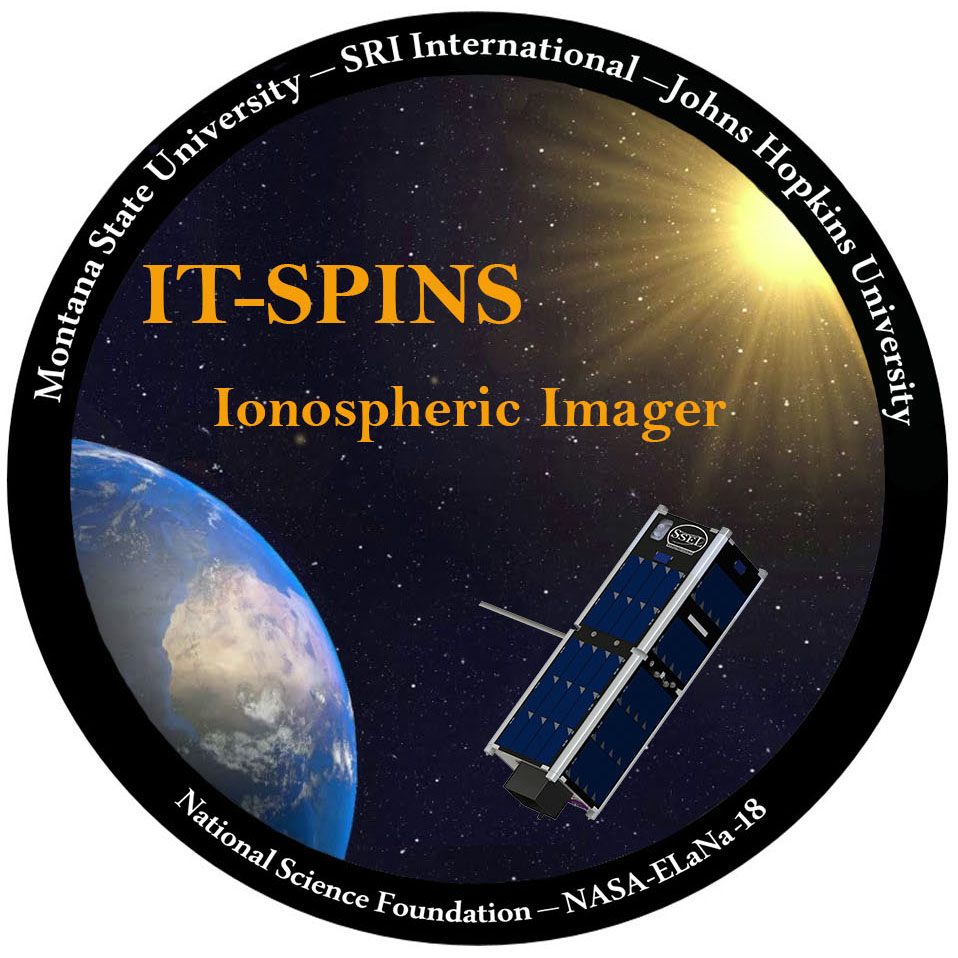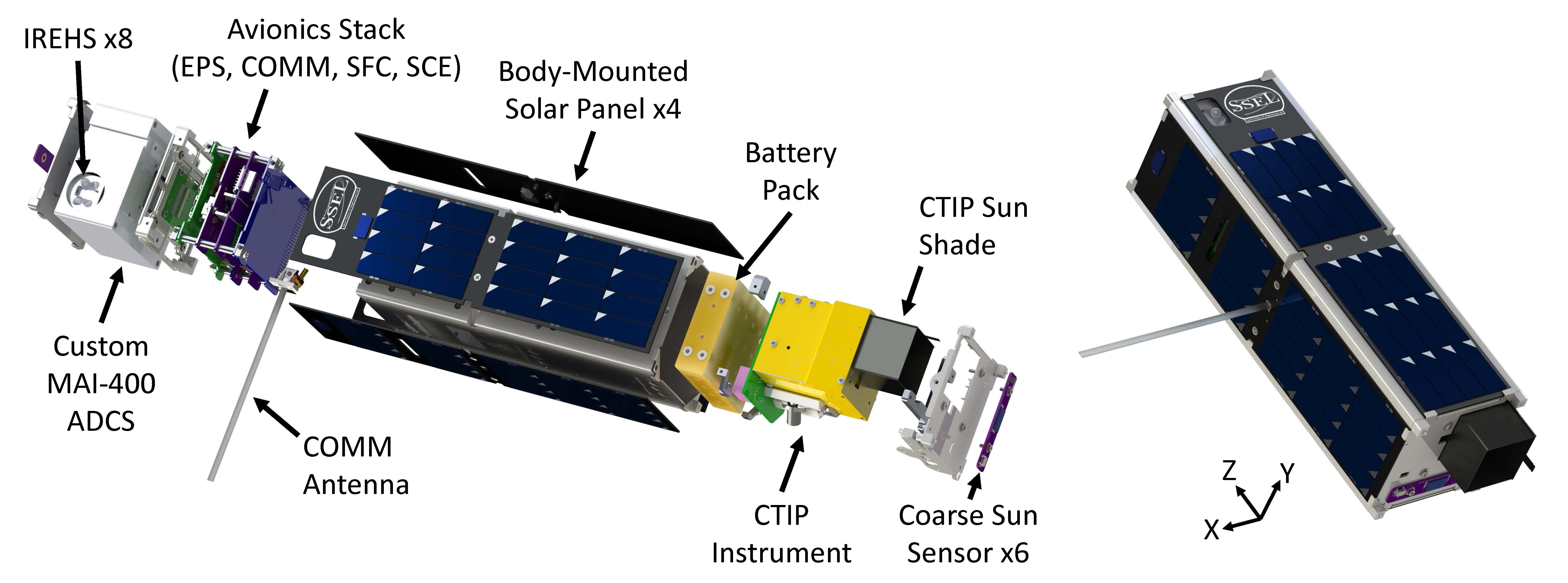IT-SPINS
Ionospheric-Thermospheric Scanning Photometer for Ion-Neutral Studies

Mission Overview
The Ionospheric-Thermospheric Scanning Photometer for Ion-Neutral Studies (IT-SPINS) mission proposes to provide the first two-dimensional (2D) tomographic imaging from a 3U research CubeSat, addressing the basic nature of the nocturnal ionosphere. This 6-month mission aims to strengthen our fundamental understanding for development of ion gradient structures in the topside of the Earth’s ionosphere and secondarily within regional phenomena such as equatorial plasma bubbles (EPBs) or polar patches. This mission could substantially improve our understanding of space weather, making future space operations safer and more efficient.
Click here to view a video about how the IT-SPINS satellite was engineered.
Deployed June 29, 2021 22:50:00 UTC
A video of IT-SPINS being lauched into orbit from Northrup Grumman's NG-15 spacecraft. Video footage courtesy of Northrup Grumman.
Spacecraft Overview
IT-SPINS is a 3U CubeSat, most noteably featuring a custom attitude control system and a CubeSat Tiny Ionospheric Photometer (CTIP) instrument to detect radiation emmisions in the ionosphere. These two systems will work in conjuction to precisely orient the spacecraft and take scientific samples.

Annotated exploded view of IT-SPINS spacecraft (left) and fully integrated IT-SPINS spacecraft (right).
Status
Deployed in June 2021, IT-SPINS experienced intermittent communication with the SSEL ground station. The spacecraft was able to beacon properly, allowing SSEL researchers to monitor its health and general status. However, commanding of IT-SPINS proved to be difficult. Of the many commands sent out by the SSEL ground station, IT-SPINS only showed a responsive action to a very small precentage. As a result, the spacecraft was never able to orient itself correctly and any science operations were put on hold indefinitely.
During IT-SPINS' time on-orbit, the SSEL team investigated probable causes of the
poor reception of the spacecraft's UHF transiever. While it is difficult to know for
certain, our findings showed that the UHF radio possibly had a narrower width front-end
than was observed on the ground during pre-flight tests, meaning the radio was effectively
deaf. The same 1.5-kW amplifier used for HRBE, which also had reception problems, was re-installed in the SSEL ground station with
the hope that an increased power output would compensate for the deafness. Alas, unlike
HRBE, the amplifier did not improve IT-SPINS' reception capabilites. Running out of
options, SSEL was hoping that further upgrades to the SSEL ground station, courtesy
of the REAL mission, would provide the resources for a last-ditch effort to command IT-SPINS. However,
the upgrades to the ground station were incompatible with the control software for
IT-SPINS and any further attempts to command IT-SPINS were abandoned.
IT-SPINS re-entered on February 26, 2024 without even having attempted its mission. Lessons learned from IT-SPINS will infrom future SSEL cubesat projects, including the ongoing REAL mssion.
